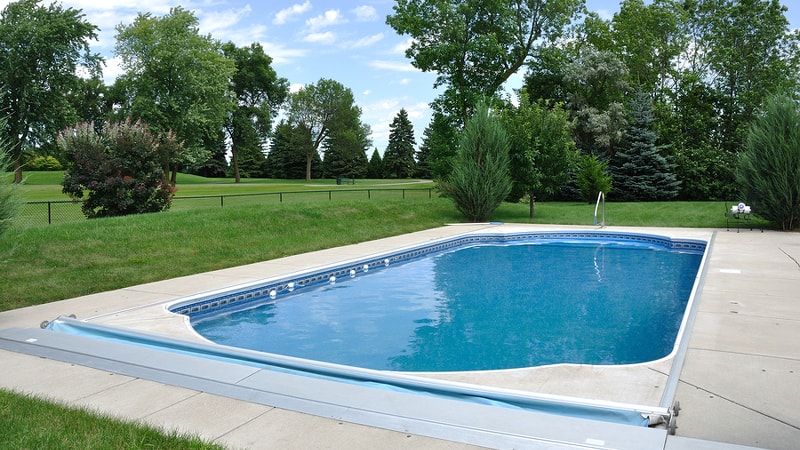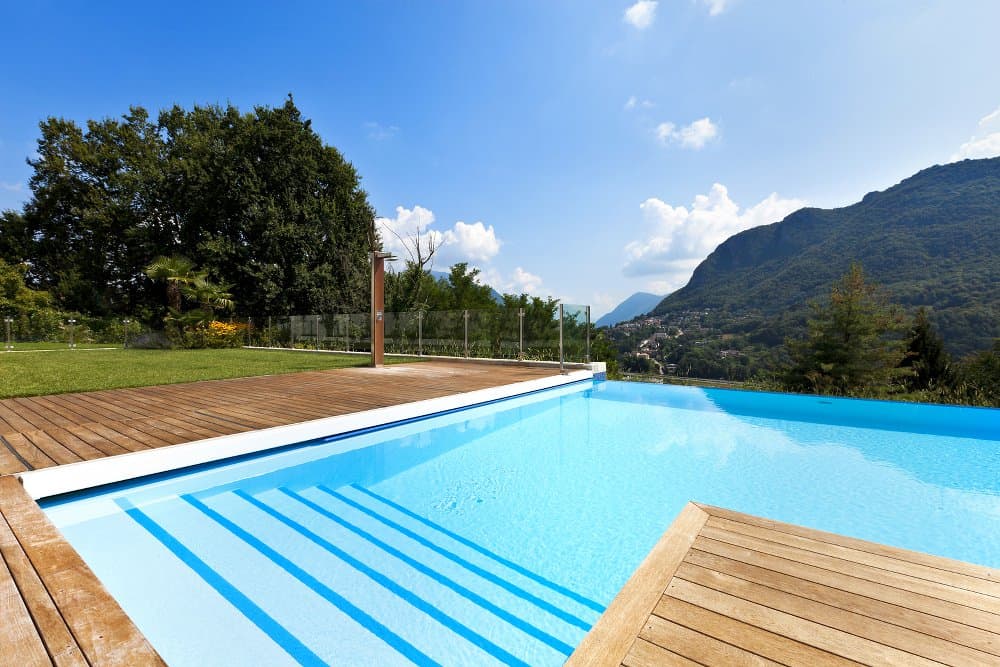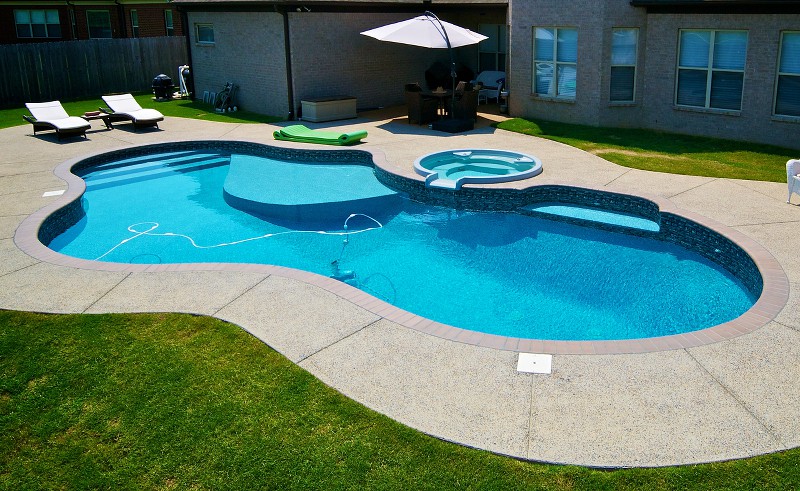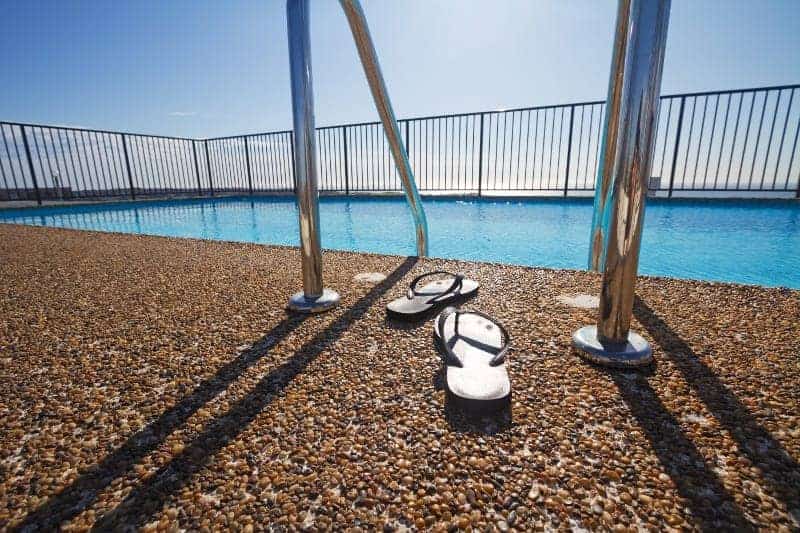
Getting a pool fence is an easy call – in fact, it’s probably required by law in your area. But what type of pool fence should you get? That’s a lot tougher.
As with almost every aspect of swimming pool design, there are lots of options and no clear-cut answers. The right pool fence depends on your pool, your yard, and your personal preferences. And oh yeah, your budget might have something to do with it as well.
If you’re on the fence when it comes to this important decision, you’re not alone. This is often one of the toughest choices you have to make when building a pool. As a starting point, here’s a quick guide to understanding the plethora of pool fencing options out there, including types of pool fences and the various materials and styles available.
What to Look For in a Pool Fence
In many cases, a pool fence is indistinguishable from a typical backyard fence that runs along the property line. In fact, you may already have such a fence before you even add a pool. However, there are some key requirements of a pool fence that a standard fence doesn’t necessarily fulfill. Here are some of the qualities that differentiate pool fencing:
Safety. Underline and put a star next to this one, because it’s by far the most important function of a pool fence. Other fences may be designed to keep pets corralled, or just serve an ornamental purpose. A pool fence is intended to keep people out – in particular, children who may get into the water unsupervised.
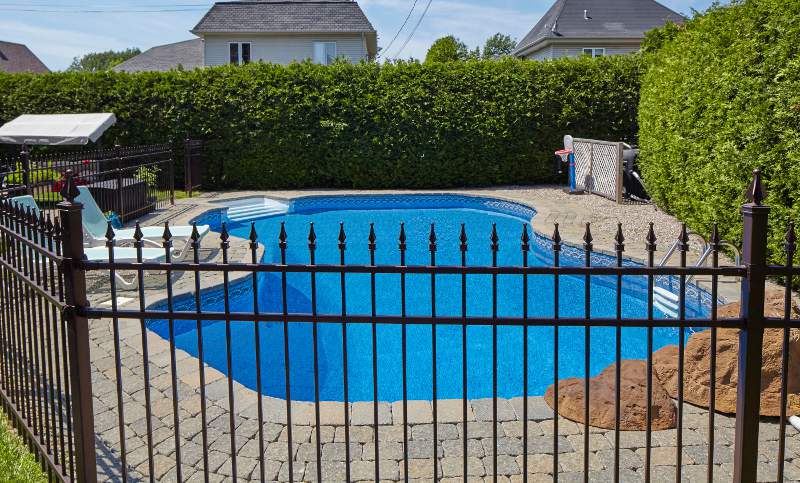
Compliance. Related to the first point, many (if not most) areas require private swimming pools to have some sort of barrier around them. Moreover, the specifications set by pool safety laws can be quite detailed. Typically, a compliant pool fence must be at least 4 feet tall, with a gate that’s self-closing and self-latching.
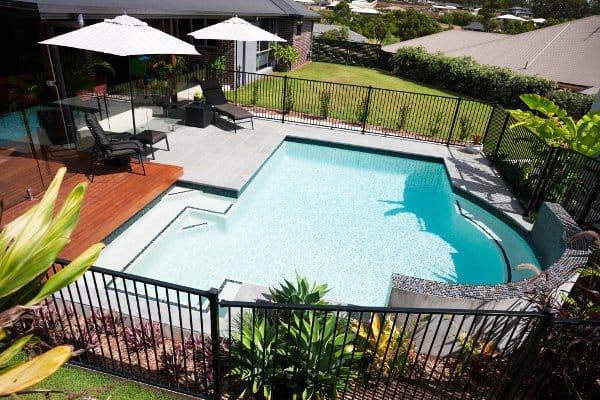
Looks. As far as your pool’s appearance goes, it might be better not to have a fence at all. But since you need one, the goal is to find a fence that complements your pool’s style, or at least blends into the background.
Privacy. The desire for backyard privacy isn’t unique to pool owners, but it’s certainly amplified. Swimming pools attract a lot of prying eyes, which isn’t necessarily what you want when you’re sunbathing.
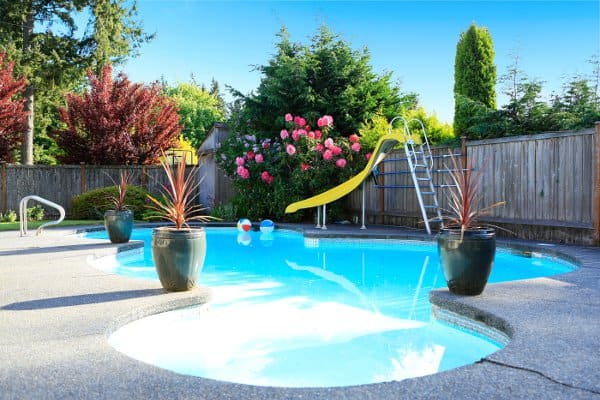
Types of Pool Fences
Pool safety fences can take many different forms, but they all fall into one of two broad categories: perimeter or interior.
Perimeter. A perimeter pool fence encloses the entire yard, typically connecting to the house and running along the property line. In other words, it’s simply a backyard fence that also serves as a safety barrier for a swimming pool.
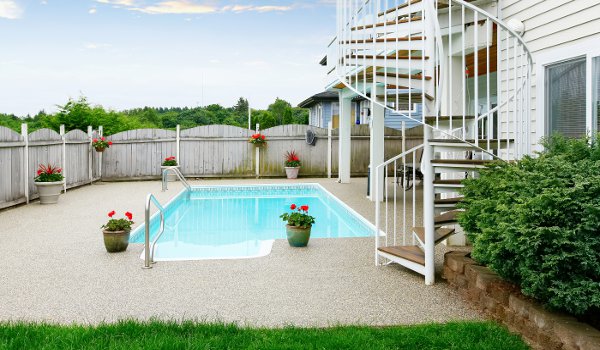
Interior. An interior pool fence sits within the yard and encloses a smaller area that includes the pool. This type of fence is ideal for people with small children, as it keeps them away from the pool while giving them free reign in the rest of the yard.
A lot of people choose to secure their pools with removable pool fencing. A removable pool fence is a type of interior fence that can be disassembled during the offseason, or taken down permanently when no longer needed (for example, when the kids grow up).
There are a couple of other options that are worth a quick mention. One is a pool screen enclosure, which not only secures your pool from wandering kids, but also shields you from pests. Secondly, if you want to upgrade the safety of your pool, you might want to consider a pool net or other type of safety cover.
Materials and Styles
Here’s where the options really get unwieldy. A pool fence has to meet certain safety specifications, but beyond that, it can take many different forms. Here are a few notable options:
Wood. When you think of a backyard fence, wood is probably one of the first things that comes to mind. Wooden fences are attractive and great for privacy, but also come with extra maintenance.
Maintenance-Free Materials. If you want a fence that doesn’t require lots of ongoing maintenance, consider something like vinyl, PVC, or aluminum. These fence materials are popular with pool owners who want to spend more time swimming and less time staining.
Posts vs. Panels. If you want to be able to see into and out of the pool area, then you likely want a pool fence comprised of posts. If privacy is more of a priority, then panels are the better choice.
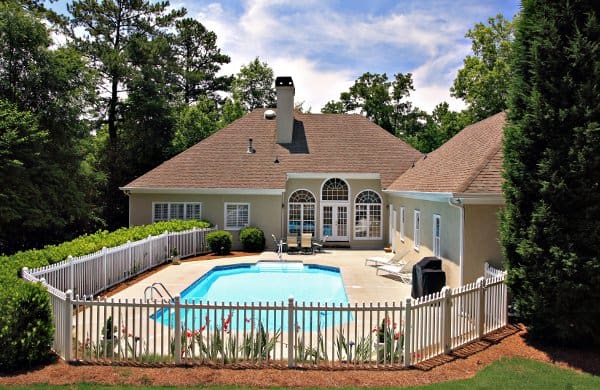
Glass. Glass pool barriers are increasingly popular, thanks in large measure to the fact that they’re so unobtrusive. Of course, that’s only if you keep the glass clean on both sides, which just underscores the fact that maintenance is a downside of this type of fence.
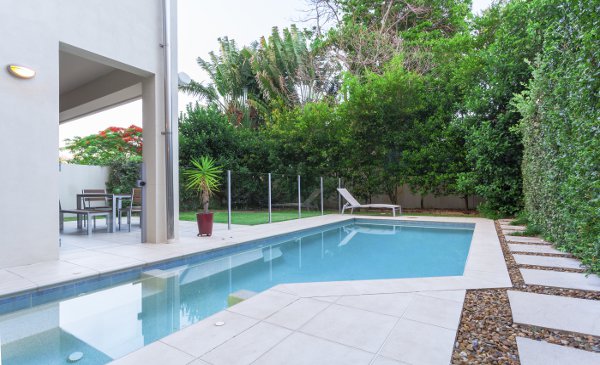
Chain Link. Chain link might seem like a subpar choice, but keep in mind that you can always cover it with a hedge to add privacy and aesthetic appeal. That said, one potential deal breaker is that chain link can offer a foothold for would-be climbers, which may be a no-no according to your local pool safety laws.
Still undecided on what type of pool fence to get? One great source of advice is your pool builder. Not only do they understand the local pool safety laws, but they also know what pool fencing options are popular in your area.


